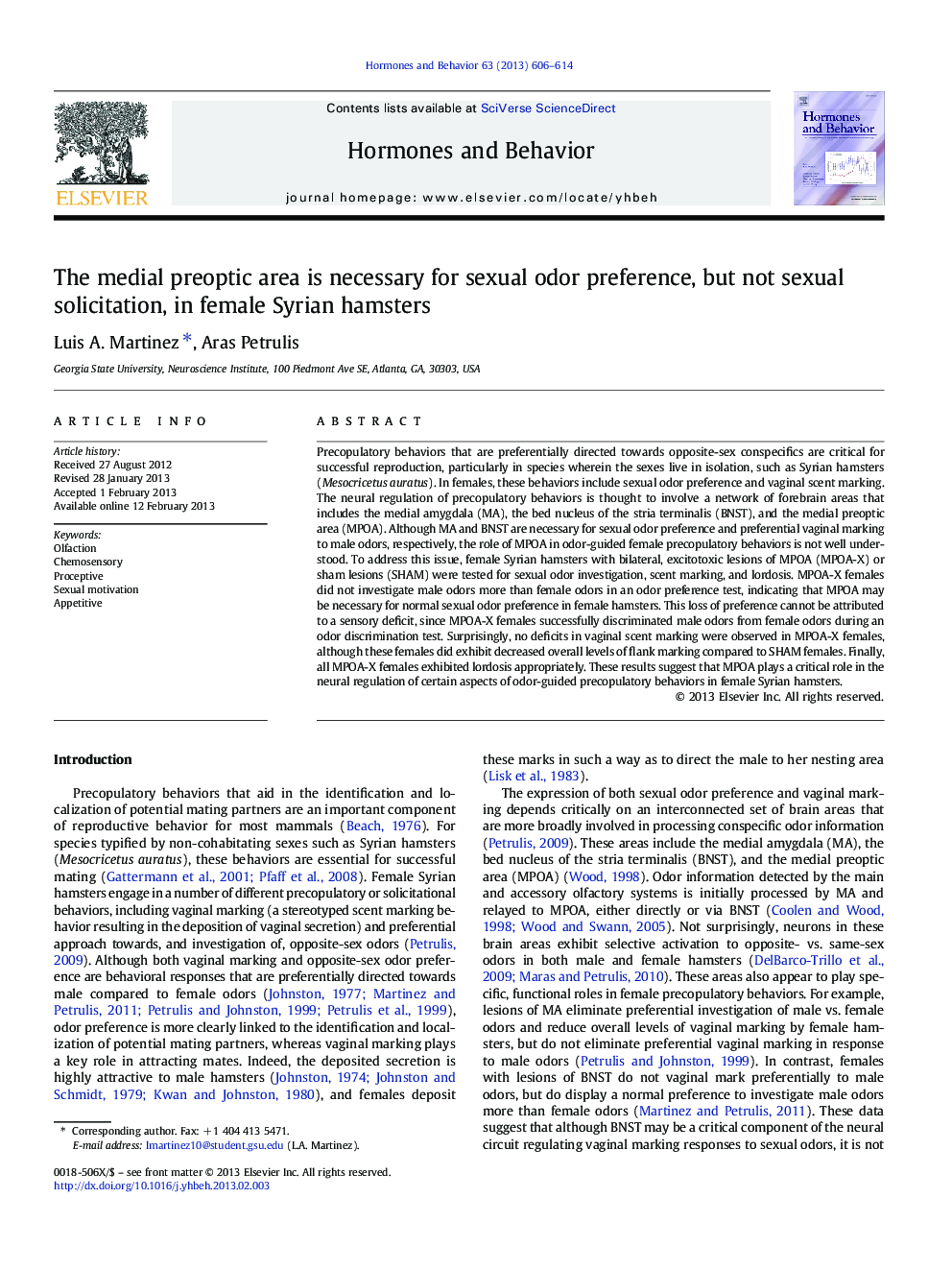| Article ID | Journal | Published Year | Pages | File Type |
|---|---|---|---|---|
| 322770 | Hormones and Behavior | 2013 | 9 Pages |
Precopulatory behaviors that are preferentially directed towards opposite-sex conspecifics are critical for successful reproduction, particularly in species wherein the sexes live in isolation, such as Syrian hamsters (Mesocricetus auratus). In females, these behaviors include sexual odor preference and vaginal scent marking. The neural regulation of precopulatory behaviors is thought to involve a network of forebrain areas that includes the medial amygdala (MA), the bed nucleus of the stria terminalis (BNST), and the medial preoptic area (MPOA). Although MA and BNST are necessary for sexual odor preference and preferential vaginal marking to male odors, respectively, the role of MPOA in odor-guided female precopulatory behaviors is not well understood. To address this issue, female Syrian hamsters with bilateral, excitotoxic lesions of MPOA (MPOA-X) or sham lesions (SHAM) were tested for sexual odor investigation, scent marking, and lordosis. MPOA-X females did not investigate male odors more than female odors in an odor preference test, indicating that MPOA may be necessary for normal sexual odor preference in female hamsters. This loss of preference cannot be attributed to a sensory deficit, since MPOA-X females successfully discriminated male odors from female odors during an odor discrimination test. Surprisingly, no deficits in vaginal scent marking were observed in MPOA-X females, although these females did exhibit decreased overall levels of flank marking compared to SHAM females. Finally, all MPOA-X females exhibited lordosis appropriately. These results suggest that MPOA plays a critical role in the neural regulation of certain aspects of odor-guided precopulatory behaviors in female Syrian hamsters.
► Bilateral lesions of MPOA disrupt preferential sexual odor preference. ► This effect is not due to a deficit in discriminating sexual odors. ► Lesions of MPOA do not disrupt vaginal marking to sexual odors.
